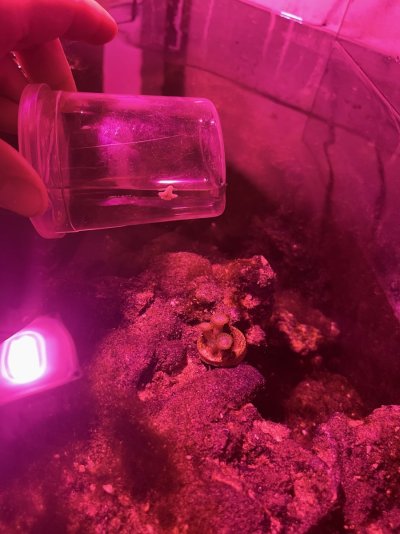They're Aquilonastra spp. starfish not Asterina and is a great scavenger. I see them with anywhere from 4 to 12 legs. The whole discusion around them seems to me excellent examples of misidentification, mistaken behaviour and assumed causality based just on heresay without looking at the research. Asterina spp starfish are preditary but only reproduce sexually and are shortlived so while it's possible some might get into a tank even if it did happen it's not going to be around long. Aquilonastra are one of the uncommon species that reproduce fissiparous or by splitting so are easy to identify by the different sized legs regrown after splitting. They perform an important function not only feeding off algae films but also feeding off microbial films including those on corals (at least ones that don't sting). FYI the mucus coating on corals ages and corals have to periodicely shed it to renew it and maintian healthy microbial processes (Ref 1, Ref 2). If Aquilonastra are feeding on zoas or softies I'll argue they are either benign or even beneficial as they may be reducing the unhealthy older mucus which can be full of unhealthy microbes which the animal is trying to get rid of and are far more likely to be the actual problem.
Here's an example, this Toadstool is doing one of it's periodic sheddings. The Aquilonastra have been in this system for years but only climb onto the Toadstool when it's shedding. In the first picture you can see the old mucus film, Aquilonastra starfish and areas they have cleaned off. The second picture shows the Toadstool a week later after it had finished shedding and the starfish moved on.


Here's an example, this Toadstool is doing one of it's periodic sheddings. The Aquilonastra have been in this system for years but only climb onto the Toadstool when it's shedding. In the first picture you can see the old mucus film, Aquilonastra starfish and areas they have cleaned off. The second picture shows the Toadstool a week later after it had finished shedding and the starfish moved on.


















